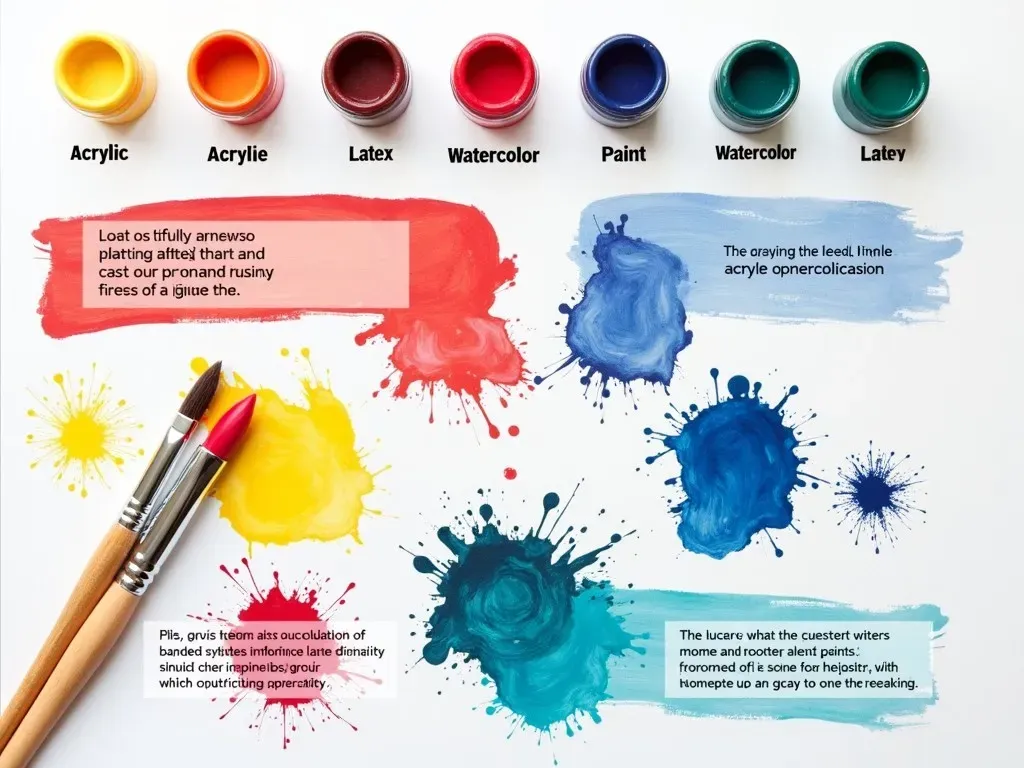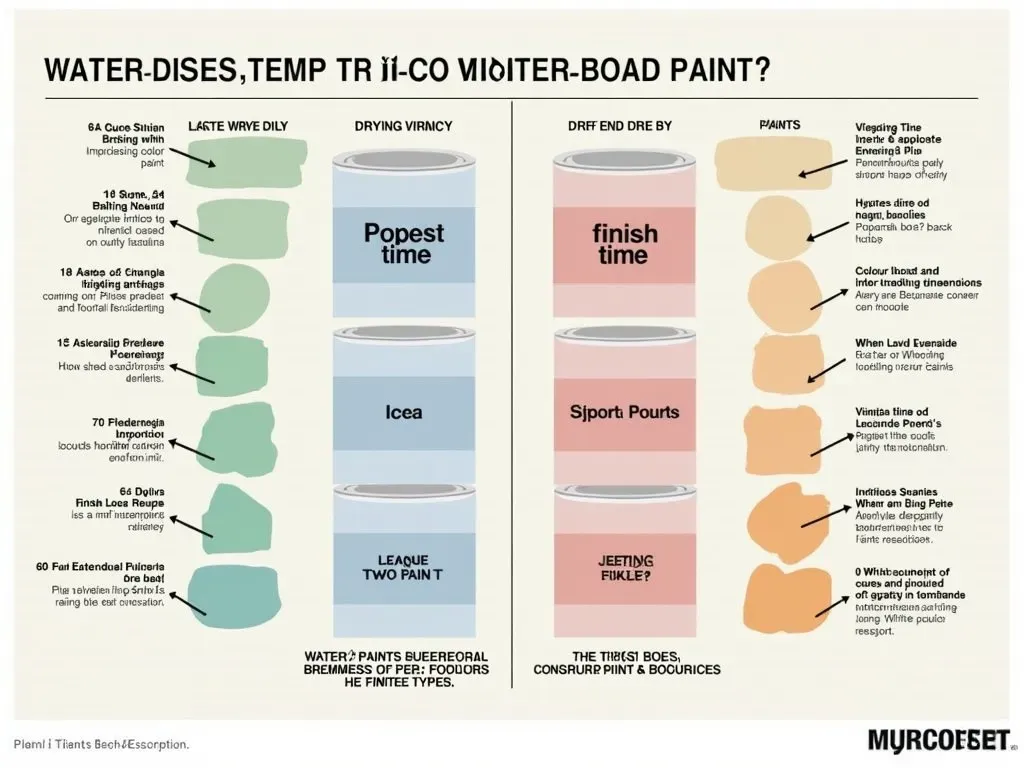What paints are water based? Water-based paints are paints that use water as the primary solvent for their formulation, making them easy to clean up and low in volatile organic compounds (VOCs). This characteristic makes them appealing for both DIY enthusiasts and professionals focusing on environmentally friendly options. Notably, these paints can often be used for various applications, including interior walls and decorative finishes.
Understanding Water-Based Paints
The Basics of Water-Based Paints
Water-based paints are formulated using water as the solvent. This distinguishes them from oil-based paints, which rely on organic solvents. When applied, the water evaporates, leaving behind a film of pigment and binder that adheres to the surface being painted. The two primary types of water-based paints include latex and acrylic, both offering unique benefits.
Table: Comparison of Water-Based and Oil-Based Paints
| Feature | Water-Based Paints | Oil-Based Paints |
|---|---|---|
| Solvent | Water | Organic solvents (like turpentine) |
| Drying Time | Fast (1-2 hours for recoat) | Slow (6-8 hours for recoat) |
| Clean-Up | Soap and water | Solvents required (e.g., mineral spirits) |
| Odor | Low to moderate | Strong |
| Durability | Improved, but less than oil-based | Highly durable |
| Ideal Uses | Interior walls, crafts, furniture | Trim, doors, outdoor structures |
Characteristics of Water-Based Paints
1. Ease of Use
One of the main attractions of water-based paints is their ease of application. They have a smooth application and can be easily touched up. The low smell associated with these paints makes them suitable for indoor use, even in poorly ventilated spaces.
2. Quick Drying Time
Water-based paints generally dry much faster than oil-based options. This is an advantage for anyone looking to complete a project quickly. Most water-based paints can be recoated within 1-2 hours, depending on the environment.
3. Environmental Considerations
With rising awareness about environmental impact, many consumers are opting for water-based paints due to their lower levels of volatile organic compounds (VOCs). These compounds can contribute to air pollution and health issues, making water-based options a more eco-friendly choice.
Reference Video
Common Types of Water-Based Paints
1. Latex Paint
Latex paint is perhaps the most recognized type of water-based paint, often used for painting walls and ceilings. It is durable, easy to clean, and available in various finishes—matte, satin, and semi-gloss.
2. Acrylic Paint
Acrylic paint differs from latex primarily in the type of polymers used. It offers superior adhesion and flexibility, making it suitable for outdoor applications, arts and crafts, or even fabric painting.
3. Enamel Paint
Although enamel is commonly associated with oil-based paints, there are water-based enamel options available that offer durability while maintaining easier cleanup.
Table: Common Applications of Water-Based Paints
| Type of Paint | Best Uses |
|---|---|
| Latex | Interior walls |
| Acrylic | Crafts, outdoor projects |
| Enamel | Furniture, trim, décor items |
Durability of Water-Based Paints
Comparing Water-Based Durability Over Time
While traditionally known for being less durable than oil-based paints, advancements in technology have significantly improved the durability of water-based formulations. Modern water-based paints often hold up well on high-traffic surfaces, such as doors and cabinets.
- Fact: Studies show that high-quality water-based paints can perform at par with oil-based paints in many situations, especially when used appropriately.
Durability Breakdown
| Application | Oil-Based Functionality | Water-Based Functionality |
|---|---|---|
| High-Moisture Areas | Excellent | Good (with mildew-resistant types) |
| High-Traffic Areas | Superior | Good (high-quality products) |
| Outdoor Usage | Best for wood, metal | Good with the right formulation |
| Interior Walls | Moderate | Excellent |
FAQs (Frequently Asked Questions)
1. Are all water-based paints latex?
No, water-based paints can be categorized into latex and acrylic. While both are water-based, they differ in composition and applications.
2. How do I clean tools used with water-based paints?
Simply use soap and water to clean brushes, rollers, and other tools. It’s important to do this immediately after use to prevent paint from drying in the bristles.
3. Can water-based paints be used outside?
Yes, many water-based paints are specifically formulated for outdoor use, providing durability and resistance to fading. Look for products labeled as “exterior” for best results.
4. Is water-based paint suitable for high humidity areas?
Water-based paints designed for high-moisture areas, often labeled as mildew-resistant, can be quite effective in bathrooms and kitchens.
5. How do I properly store water-based paint?
Make sure to tightly seal the can and store it in a temperature-controlled environment. Avoid exposing paints to extremes of heat or cold.
Resources
For more in-depth information about water-based paints, you can refer to Craft Art’s Guide to Water-Based Paint.



This extensive guide provides information on what paints are water-based, their applications, types, and benefits. Whether you’re embarking on a DIY project or considering professional use, understanding water-based paints will empower your choices and elevate your results.
